By Jon Villasper (Jinx Birder Extraordinaire)
One of the most popular places to go birdwatching in Metro Manila and probably where most local birders have had their first taste of the world of birds is the University of the Philippines campus in Diliman, Quezon City.
The main campus of the university sprawls over approximately 500 hectares of land located within throwing distance of the Quezon City Hall and has a variety of environments where you can spot different types of birds. One could say that the campus literally offers a breath of fresh air since it is one of the very few areas in Metro Manila where trees abound. In fact, if you look at the city from Google Earth, one will notice that the campus is the largest and greenest spot second only to the La Mesa forest reserve in the northeast. Because of this, people have been going on bird surveys and birding sorties in the campus since the 90s and probably even earlier. To date, eBird shows that 96 species of birds have been recorded in the campus by birdwatchers and bird photographers. The running list can be found here.
As the flagship campus of the UP as well as being a national research university, the area has its mix of academic, administrative, research, and residential buildings as well as open spaces and wooded areas, the largest of which is the UP Arboretum located far away at the northwest corner of the campus.
The beauty of birding in the campus is its accessibility in terms of permits and transportation. Anyone can visit the campus any time, any day even if you are not officially part of the university. No permits are needed except when you are coming in large numbers, coming in by chartered bus, or bringing large cameras.
To get in and out of the campus, you need to enter through University Avenue coming from the Quezon Memorial Circle. There are several other gates where you can enter the campus using a vehicle but if you don’t have a UP sticker, entry and exit is only via the University Avenue. Pedestrians can get through any gate.
There are jeepneys plying the UP campus route coming from PHILCOA and Katipunan Avenue. They have specific routes but typically go around the core area of the campus known as the Academic Oval. The Academic Oval itself is off-limits to public transport and employs a one-way scheme, thus jeepneys use the roads behind the buildings of the Oval. In a bid to manage vehicular traffic in the campus as well as encourage people to walk, jeepney routes change from time to time. Current jeepney routes (as of this writing) can be found here.

Places to Bird
Anywhere in the campus is a potential birding spot, as some would say, but to maximize your birding experience, go straight to the usual tried-and-tested birding places. For this article, I wrote about ten sites that are worth visiting if you can. These birding places can be lumped into general areas namely, the Academic Oval, The Science Complex, Hardin ng Rosas, and others.

1 – THE ACADEMIC OVAL
he Academic Oval is the core of the campus where you will find most of the academic buildings and probably has the most conducive environment for people to walk around in the sprawling campus. The iconic acacia-lined thoroughfare provides continuous shade in most parts of the road and vehicular traffic is one-way and confined to the outer half. The inner half is further divided into a joggers’ lane (innermost lane) and a bikers’ lane (middle lane). That said, you can expect the area to be very busy with students walking around as well as joggers and bikers at any given time of the day. However, despite this busy-ness, you will find that just going around the Academic Oval could yield a nice list of common birds for you plus the occasional surprise birds.
There are several places within the Academic Oval that birders like to visit. These are the old Faculty Center, the UP Lagoon and Beta Way, the Washington SyCip Garden of Native Trees, and Quezon Hall.
A reminder though, photography with long lenses is not allowed around the Academic Oval. There is a standing policy from the Office of the Vice Chancellor for Community Affairs (OVCCA) that prohibit its use owing to the number of professional photographers and videographers using the campus as location for prenups, ads, indie films, and other related activities geared for profit. Binoculars are allowed.
University Avenue in front of Quezon Hall (1) – The University Avenue is the main access to the campus coming from the Quezon Memorial Circle. Once you enter this thoroughfare you are immediately thrown into a totally different place with the wide, well-maintained road lined with palm trees and very old acacias separating you from grasslands on both sides. This whole stretch of grassland is a promising place for birding. Some of its regulars are Striated Grassbirds, Long-tailed Shrikes, egrets, Zebra Doves, Collared Kingfishers, Lowland White-eyes, and sunbirds. If the season is right and you have a good eye, you can even chance upon the occasional raptor flying high up or just lazing around on a branch. One time, a Grey-faced Buzzard treated us to a NatGeo moment when it came gliding down hidden from a perch at the far end to where we were standing to grab a Zebra Dove. It stood there for a few seconds then flew back to its perch to enjoy its prey.
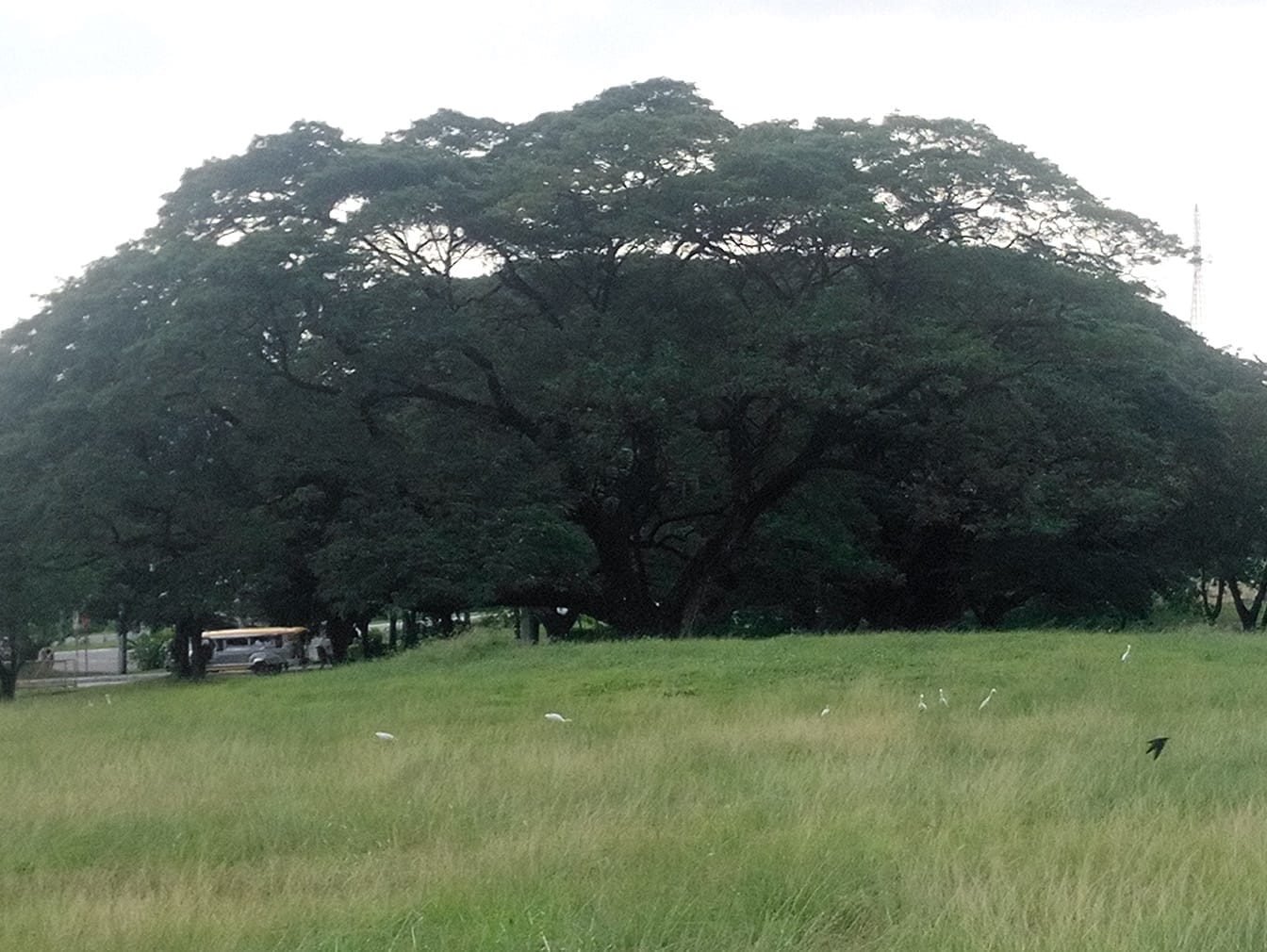
Old Faculty Center (2) – The old College of Arts and Sciences Faculty Center is the second building on the right as you negotiate the Academic Oval. Currently, it is under construction since it burned down several years ago. Despite this, birders come here to look for a specific bird – the Philippine Nightjar. Just scout the trees in the area and you should find it in broad daylight. If unlucky, bring someone who knows where it usually roosts. Prior to the fire that took down the building, a favorite target of birders here, along with the nightjar, was the Philippine Hawk-Cuckoo. Hopefully, it will find its way back here once construction of the new building ends.
For some lazy birding, there is a pocket of large trees between the Faculty Center and the Vargas Museum that can yield a good number of species. Just get a cup of coffee at the Museum Café at the Vargas Museum (the building before the Faculty Center) and take a seat for a good view of the patch while you and your friends sip your coffee and exchange jokes and stories. Lowland White-eyes, Olive-backed Sunbirds, Collared Kingfishers, and Philippine Pygmy Woodpeckers are expected here.
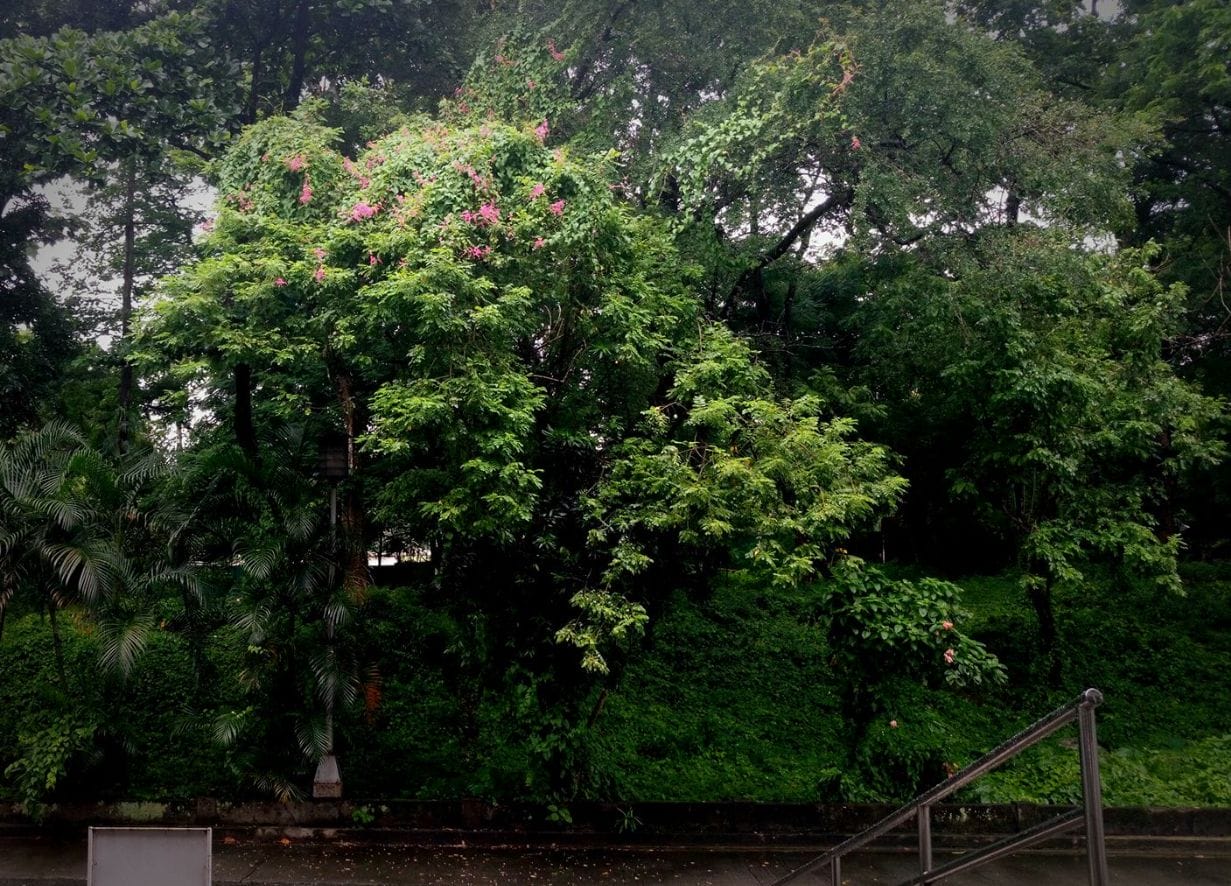

UP Lagoon and Beta Way (3) – At the center of the Academic Oval are two of the most popular wooded areas in the campus – the UP Lagoon and the Beta Way. Technically one patch of woodland starting from behind the Amphitheatre to the Main Library and separated in the middle by Roces Street, this area comes complete with large trees, grassy patches, a creek, and an impoundment forming a pond in the middle giving the section in between Roces Street and the Amphitheatre the name “UP Lagoon.”
A lot of people come to the UP Lagoon to hang around or do rehearsals for class presentations, picnics, et cetera but there is enough room to go for some birdwatching without being disturbed by people. Typical birds to see here are Colasisi, egrets (depending on the season), sunbirds, white-eyes, gerygones, orioles, Pied Trillers, Collared Kingfishers, waterhens, crakes, and pygmy woodpeckers. Some lucky birders have chanced upon an Oriental Cuckoo, a White-eared Brown-dove, and even a Black Bittern which unfortunately was hunted by a couple of locals. Come in early before any activity starts or just find a secluded spot and sit down to wait for birds to pass by.
The other half of this wooded patch from Roces Street to the Main Library is typically referred to as the Beta Way, although that would actually be the name of the paved footpath that cuts across the patch from Melchor Hall to Palma Hall. Safety within this area is sometimes a concern as this used to be an idle patch where the only activity was the comings and goings of students to and from Palma Hall and Melchor Hall. A linear park has been recently added to this area perpendicular to the Beta Way which has increased activity in the area. Some have raised concern though that certain bird spots might have been disturbed during the construction of the park. Hopefully, the area recovers along with its bird diversity. Highlights for this area are White-eared Brown-dove, Elegant Tits, and a Chinese Sparrowhawk that has been observed to show up during migration season in the same place.
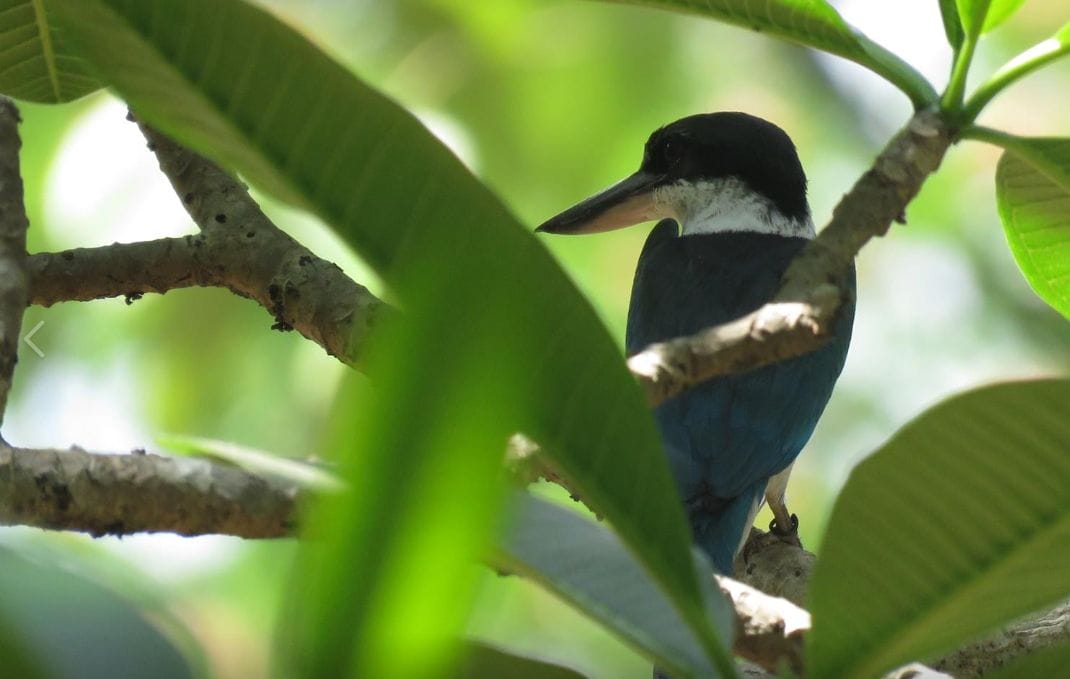
Washington SyCip Garden of Native Trees (4) – The Washington SyCip Garden of Native Trees is a landscaped garden of, well…, native trees found behind the UP Carillon tower. There is a winding network of brick-paved footpaths that will take you through the garden and if you’re not in the mood for some walking, there are stone benches surrounding the Carillon tower for you. Right now, the trees are still quite young, but they already attract some campus regulars like the Black-naped Oriole and Olive-backed Sunbird. With around a hundred native species in the garden, this site will be a very promising hot spot due to the variety of birds it can attract and support.

2 – THE NATIONAL SCIENCE COMPLEX
The Science Complex, located south of the Academic Oval, is one of the best places to go birding in the campus. It has a variety of environments hosting different types of birds and other wildlife. To get there, take a jeepney from PHILCOA then get off at the National Science Research Institute (NSRI). From there start walking down P. Velasquez Street and take your pick of birding spot – the Marine Science Institute grounds, UP Biology Arboretum, and the main/central area of the National Science Complex.
Marine Science Institute (MSI) (5) – The MSI building is hard to miss given that it is the first building on the left facing the road. Despite being located along a busy road, the MSI grounds (parking lot) keeps coming up with unusual finds probably owing to the lushness and variety of the trees surrounding it. Aside from the campus regulars, Coletos have been seen there as well as a Chestnut-winged Cuckoo. Birding is within and around the parking lot right in front of the building.

UP Biology – EDC Binhi Threatened Species Arboretum (6) – Taking the footpath going to the left right after the NSRI building and just before reaching the MSI or going down the steps by the guard house along Quirino Avenue right after the NSRI will take you to the UP Biology – EDC Binhi Threatened Species Arboretum. Not to be mistaken for the UP Arboretum which is located somewhere else, the UP Biology – EDC Binhi Threatened Species Arboretum is more commonly referred to as Owl’s Nest, or sometimes “Frogs.” The area is divided into sections hosting vegetation representative of different forest types. Barred Rails and White-breasted Waterhens are frequently heard in the bushes near the small creek originating from the back of one of the buildings there. Highlights of the area are Philippine Scops Owls (ask a birder friend to help you find it), Philippine Hawk-cuckoo, AND the fictional bird called the Narcissus Flycatcher which has been reported in the area every year, of all days, approximately around my birthday. They disappear when I’m birding in the area.

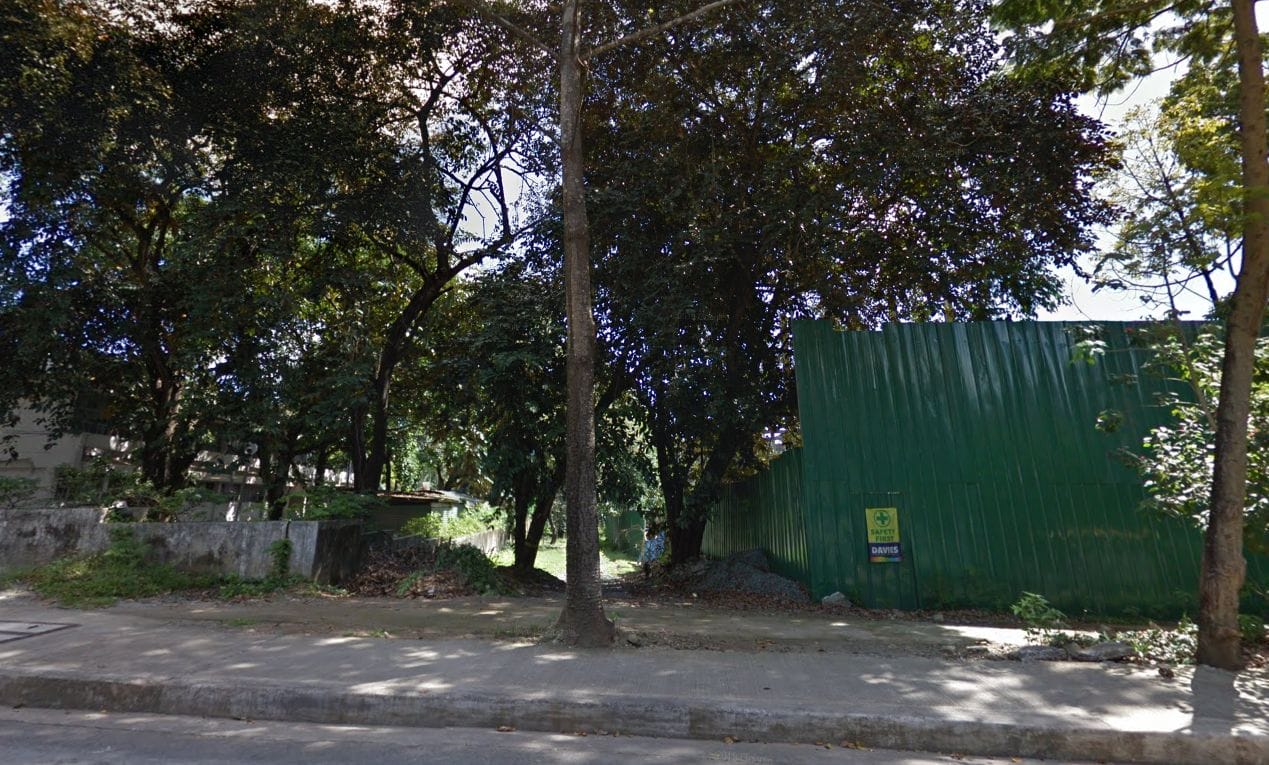
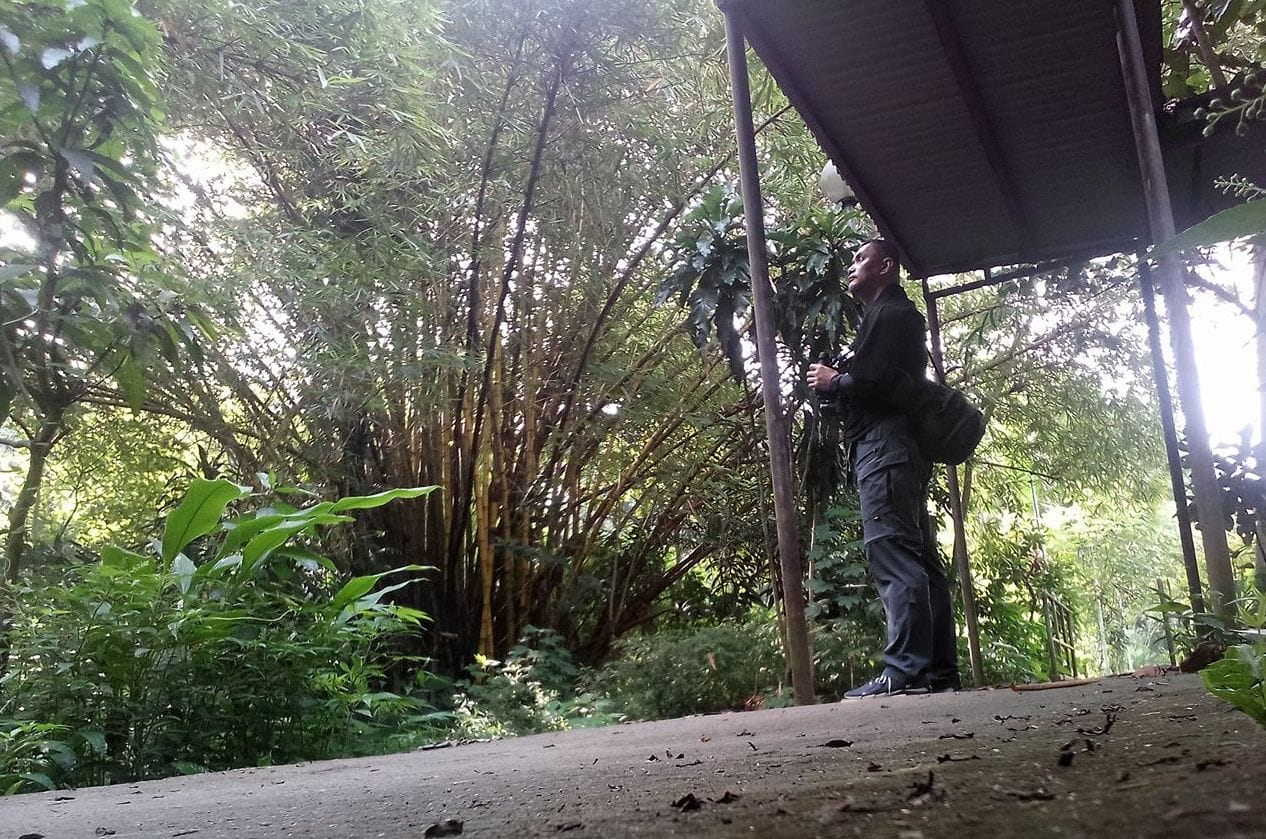


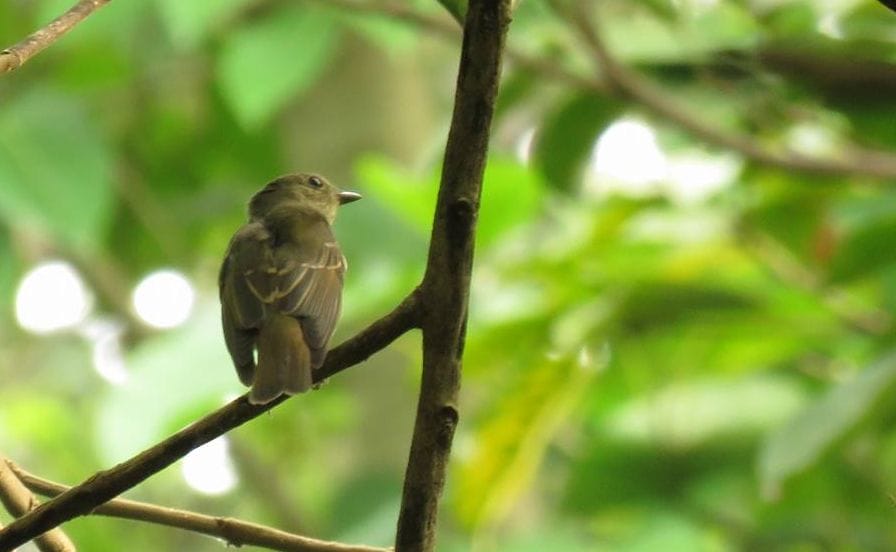
Science Complex main area (7) – Taking a left after the MSI building will take you to the Science Complex main area. It is mostly occupied by Crested Mynahs early in the morning and late in the afternoon. Certain trees surrounding the area are roosting areas for these birds. One tree at the corner of the Molecular Biology building parking lot once held more than 20 Pied Trillers making for an easy morning look-see.
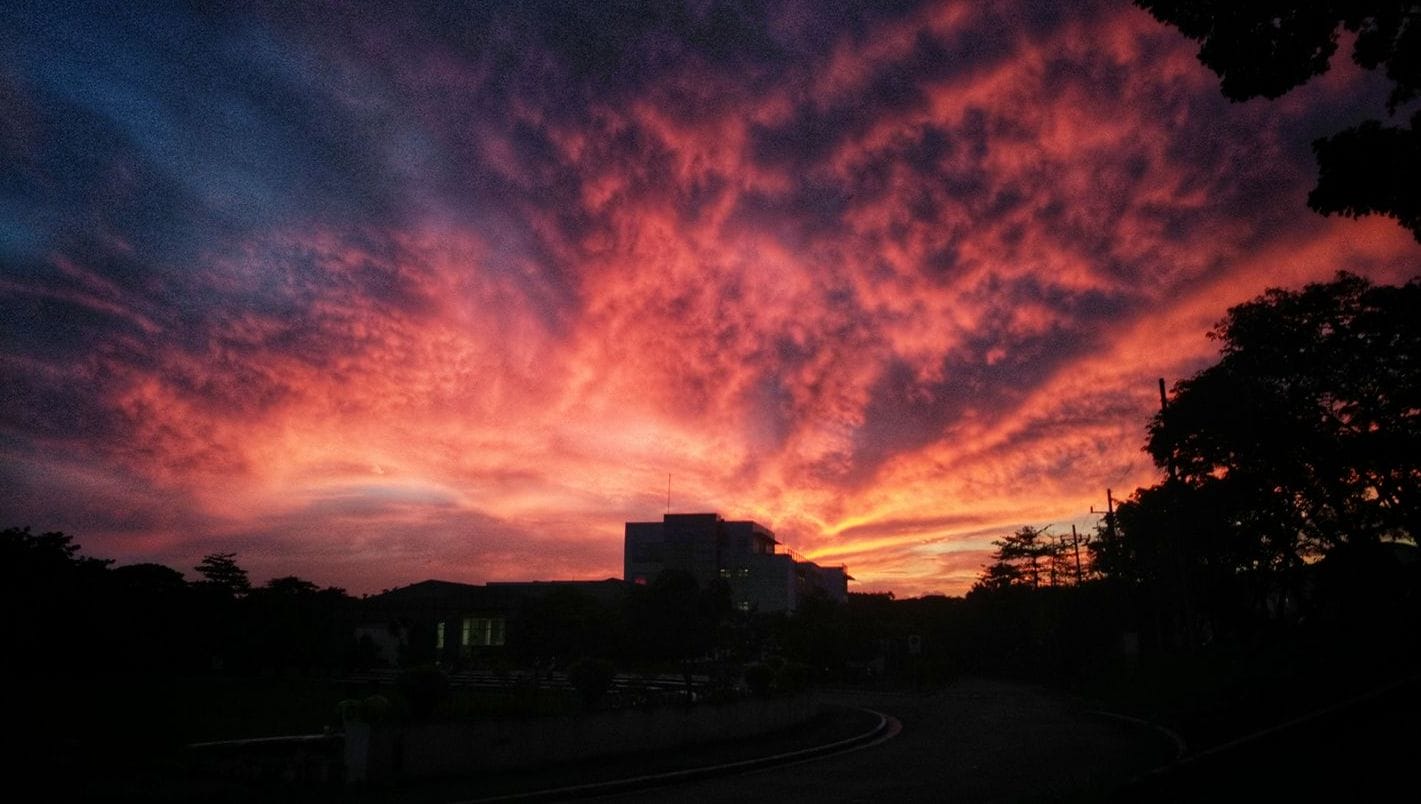
3 – OTHERS AREAS
Other places to go birding in the campus are the Hardin ng Rosas and, if you are up to it, the UP Arboretum.
Hardin ng Rosas (8) – Hardin ng Rosas is one of the BLISS-style residential areas for university faculty. Being located at the very far end of Pook Aguinaldo and sharing its borders with the old, rural-like community of Krus na Ligas, your birding experience will be totally different from the main areas of the campus. Here, you will find an expansive, terraced rice field where you could find munias and other grassland species as well as a permanent wetland with shallow and deep parts hosting Barred Rails, Common Moorhens, White-breasted Waterhens, Common Kingfishers, snipes, and Black-winged Stilts.
To get here by car from Katipunan Avenue, drive along CP Garcia Avenue and take turn left at the next intersection right after the UP gate at P. Velasquez St (NIGS gate). From the University Avenue, take CP Garcia and turn right at the next intersection after the Pook Amorsolo basketball court on the right. Drive along the Purok Aguinaldo street and turn right at the Hardin ng Rosas residential buildings just before the end of the road. The birding spot is at the very end of Hardin ng Rosas where cars are parked and jeepney shuttles make their U-turn. Set up your scope along the fence but do make sure that there is enough space for the shuttle to turn around.
Alternatively, you can take a UP Campus jeep from PHILCOA and get off at the Carabo Horn waiting shed/checkpoint/guardhouse and get on a UP IKOT jeepney. Ask to be let off at P. Velasquez and either walk the distance to the birding spot or take the jeepney shuttle from the guardhouse which turns around at the birding spot.
You might be asked by a security guard about your business in the area even though they are quite used to seeing birdwatchers there. Just be nice. Aside from that there are three things to remember in Hardin ng Rosas: 1) Do not point your bins or cameras at the buildings so as not to raise any issues on privacy. 2) Beyond the fence is not UP. You will be birding from the Hardin ng Rosas side of the fence. If you want to get closer to some of the birds, do so at your own risk, and lastly 3) our birding spot is the residents’ parking area. Move your car if someone wants to park.
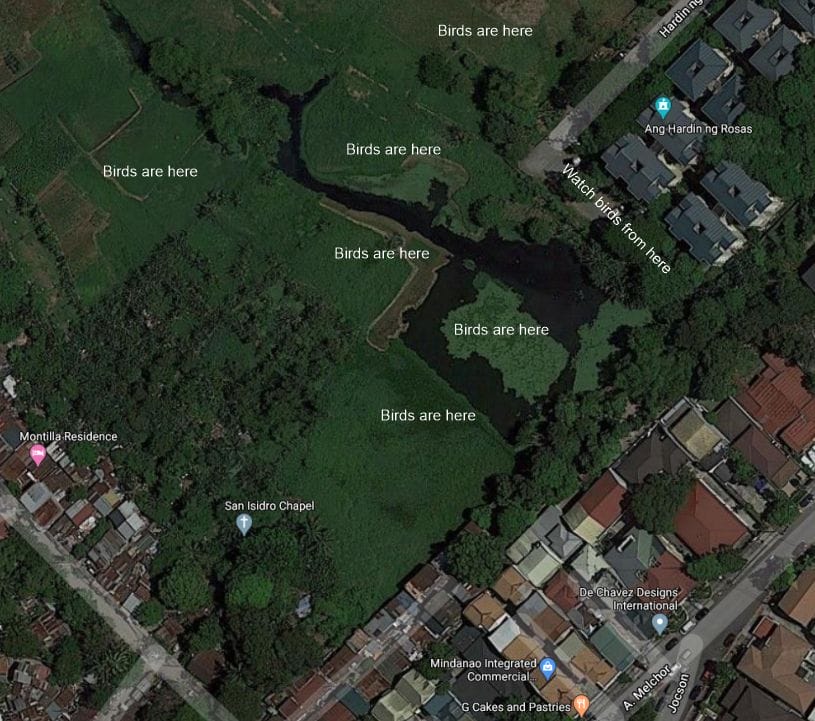
UP Arboretum (9) – The UP Arboretum is a large, forested area found at the northwest corner outside the main campus. Densely packed with very large forest species, the area has been repeatedly and mistakenly thought of as remnants of an old-growth forest in Quezon City. The truth, however, is that it was originally an open field which was turned into a “nursery for forestation activities” during the post-war era. Being a rather large pocket forest, its appeal as a birding site should be very high but informal settlers abound in the area and poses a security concern. It is best to get permission from the OVCCA and request for escorts to get in. If you want to have an initial idea of what the place looks like, just drive by Central Avenue and you will see it just across the Iglesia Ni Cristo compound and just beside the Philippine Nuclear Research Institute.
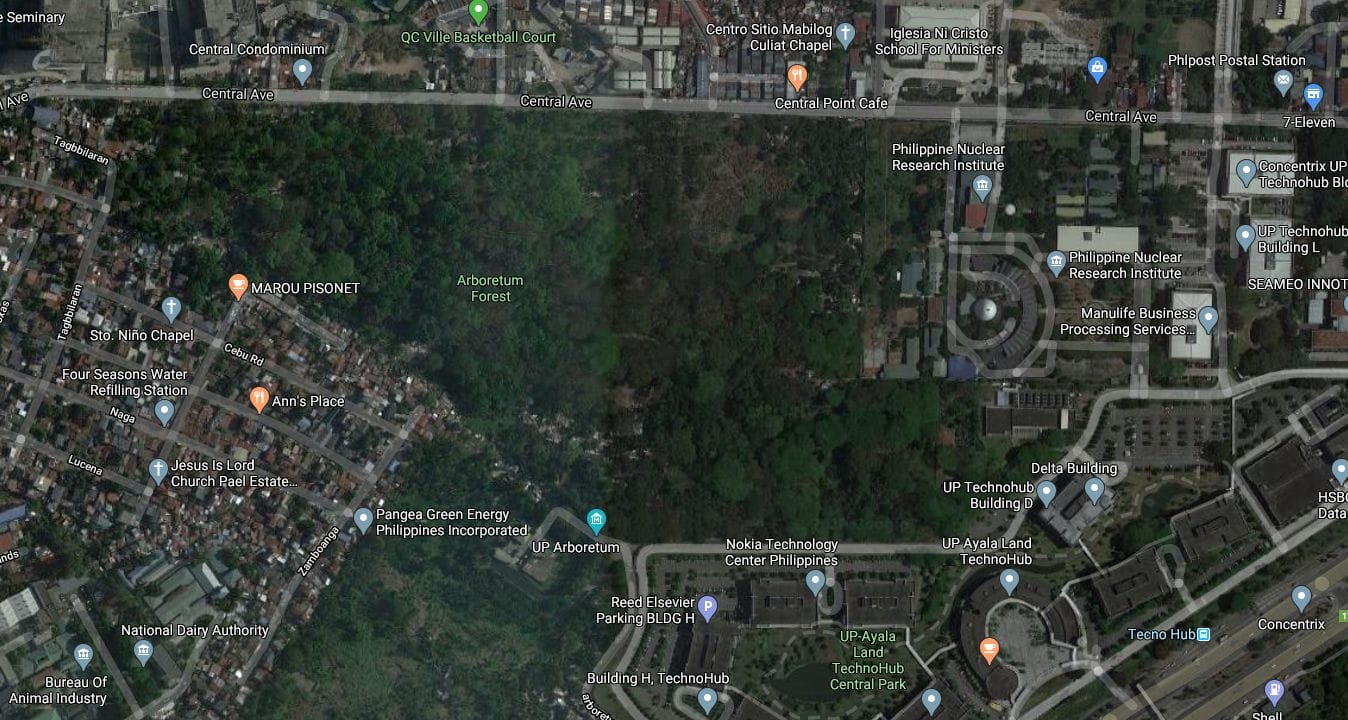
New CSSP Faculty Center (10) – Having been a faculty member of the University in the past, I have had the privilege of going around the campus outside of my class hours. I have visited all the places mentioned here but some of the best birding sessions I’ve had would be at the fourth floor of the new College of Social Sciences and Philosophy Faculty Center at the back of Lagmay Hall. The fourth-floor houses most of the faculty members of the Department of Geography and has excellent views of the vegetation canopy at eye-level. From here I’ve seen a Chinese Sparrowhawk with its unmistakable white body and black wing tips (while having an al fresco breakfast with colleagues), seven Coppersmith Barbets on one leafless tree, numerous orioles and crows, sunbirds, bee-eaters, wagtails, kingfishers, and at night a Philippine Nightjar flies just outside the building. Unfortunately, since the fourth floor are all offices, access is limited to faculty, students, and guests of the Department of Geography.

There is much to explore in the UP Diliman Campus and I’m sure there are more areas to find birds aside from the sites I have listed in this article. Part of the joys of birding is the discovery of new sites, so go out and bird, everyone!

Most informative article thus far, outside of technical write-ups, on UP Diliman as a wild bird sanctuary.
As a side note, personal sighting of some rare ones in the campus: 1) A solitary Dollarbird (August 2019) beside the Church of the Risen Lord, 2) Pink-necked Green Pigeons, though quite uncommon in the area, may still be spotted in the tree canopies at the back of the aforementioned church,3) Also an individual Grey Heron at Hardin three years back (October 2017), 4) Likewise at Hardin, sighting of a Philippine Coucal (August 2017) with confirmed call distinct from the Lesser Coucal.
Documentary photographs were made to record the encounters.
Good afternoon. Me and my friends are planning to have a bird watching activity on Aug 10 for the birthday celebration of one of us. Would this be possible? Kindly let me know how to go about it. Thank you.
Reading this on the eve of Big Day 2024. I found this as I was looking for tips to get to the Hardin ng Rosas in UP. Great article: complete as far my needs and interests are concerned, informative, and very well documented. Thanks so much!